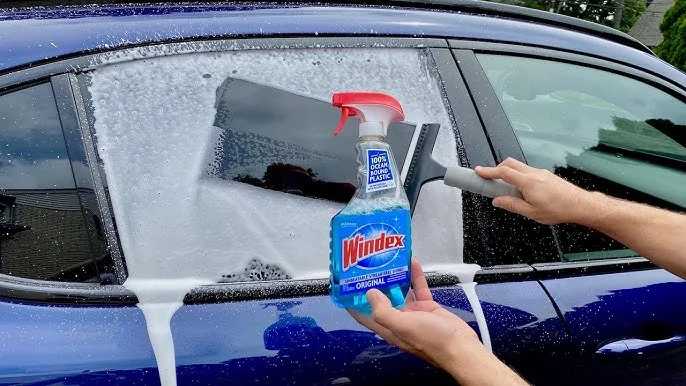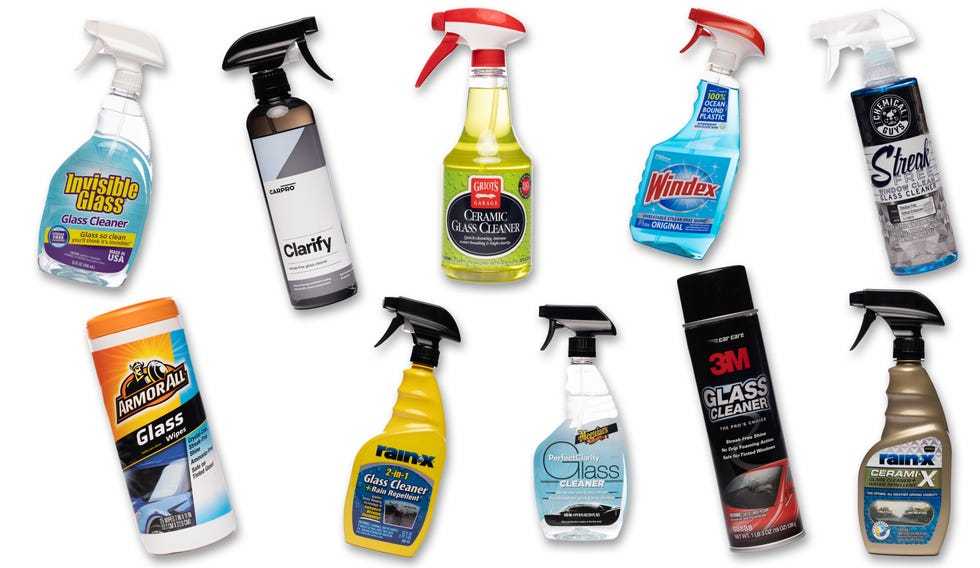To make glass polish at home, mix a small amount of baking soda with water to create a paste, then gently buff the glass with a soft cloth. For extra shine, add a drop of vinegar or lemon juice to the mixture for a natural boost. Finish by wiping with a clean, dry cloth to reveal a pristine, sparkling surface.
Creating your own glass polish is easier than you think and can save you money while giving your glass surfaces a brilliant shine. In just a few simple steps, you can restore clarity and remove stubborn fingerprints, water spots, or haze. Whether you want to brighten your mirrors, windows, or glassware, homemade solutions are gentle yet effective, making your glass look brand new without harsh chemicals. Read on to discover how to craft a perfect glass polish that will leave your surfaces gleaming with minimal effort.
How to Make Glass Polish: A Complete Guide
Making your own glass polish at home is a smart way to bring back that crystal-clear shine without spending a lot of money. In this section, we’ll explore easy, effective recipes and tips to create glass polish that works on windows, mirrors, glassware, and more. You’ll learn step-by-step processes to achieve a streak-free, glossy finish using common household ingredients. Whether you’re cleaning a small mirror or a large window, these methods will help you get professional results.
Understanding the Ingredients for Making Glass Polish
Before diving into recipes, it’s important to learn about the key ingredients involved in making glass polish. The main goal is to create a solution that cleans, removes smudges, and leaves a shiny surface. The most common ingredients include:
- White Vinegar: A natural cleaner that dissolves grime and gives glass a streak-free shine.
- Baking Soda: Helps remove tough stains and adds an abrasive quality for cleaning.
- Liquid Dish Soap: Cuts through grease and dirt, making cleaning easier.
- Water: The base for most solutions, helping to dilute and spread the cleaning agents evenly.
- Alcohol (Isopropyl or Rubbing Alcohol): Evaporates quickly, reducing streaks and adding a sparkling finish.
- Optional Oils or Waxes: For added shine and protection, such as car wax or mineral oil.
Knowing how these ingredients interact helps you choose the right recipe for your specific needs. For example, vinegar-based solutions work well on eco-friendly cleaning, while alcohol-based solutions dry faster and leave fewer streaks.
Simple Homemade Glass Polish Recipes
Creating glass polish at home is simple and requires minimal ingredients. Here are three popular recipes you can try. Each recipe is designed for different cleaning needs, from light dust to stubborn dirt.
Basic Vinegar and Water Solution
This is the most straightforward recipe perfect for regular cleaning.
- Ingredients: 1 cup white vinegar, 1 cup water, optional few drops of dish soap.
- Preparation: Mix all ingredients in a spray bottle. Shake well before use.
- Usage: Spray on glass surfaces and wipe with a lint-free cloth or paper towels for a streak-free shine.
This solution works well for windows, mirrors, and glass tables. Remember to clean in a circular motion for the best results.
Vinegar, Water, and Baking Soda Paste
For tougher stains or foggy glass, this paste provides extra cleaning power.
- Ingredients: 1/2 cup baking soda, enough water to make a paste.
- Preparation: Mix baking soda with water until it forms a thick, spreadable paste.
- Application: Apply the paste to the glass with a soft cloth or sponge. Let sit for a few minutes, then scrub gently and rinse with water.
This method is excellent for removing grime or mineral buildup.
Alcohol-based Glass Cleaner
Ideal for streak-free, quick-drying results on mirrors and glass surfaces.
- Ingredients: 1/2 cup rubbing alcohol, 1/2 cup water, 1 teaspoon dish soap, optional drops of essential oil for scent.
- Preparation: Combine all ingredients in a spray bottle and mix thoroughly.
- Usage: Spray on glass surfaces and wipe with a clean cloth. The alcohol evaporates rapidly, leaving a glossy finish.
This recipe is especially good for glass appliances and electronics screens.
Additional Tips for Effective Glass Polishing
To get your glass to look its best, follow these expert tips:
Use the Right Tools
- Microfiber Cloths: Soft, lint-free cloths that won’t scratch glass and remove dirt effectively.
- Paper Towels: Convenient for quick cleanups but may leave lint if not high quality.
- Spray Bottles: Reusable and perfect for applying solutions evenly across surfaces.
Avoid using rough or abrasive cloths which can scratch glass surfaces.
Cleaning Technique for Best Results
- Start from the Top: Clean from the top down to prevent drips and dirty streaks.
- Use Circular Motions: Helps lift dirt and prevents streaks.
- Dry Thoroughly: Wipe with a clean, dry cloth to prevent water spots and streaks.
Patience and consistent cleaning in the same direction improve clarity.
Preventing Streaks and Residue
- Avoid Over-spraying: Too much solution can cause drips and streaks.
- Use a Second Dry Cloth: After wiping, use a dry cloth to buff and enhance shine.
- Clean in Shade: Direct sunlight can cause rapid drying and streaks.
These small tips ensure a streak-free, crystal-clear surface every time.
Additional Methods for Special Glass Types
Different glass surfaces may require specific care. Here are some tailored tips:
Cleaning Antique or Fragile Glass
Use gentle, non-abrasive solutions like diluted vinegar and soft cloths. Avoid harsh scrubbing or strong chemicals.
Polishing Glassware and Decorative Items
Apply small amounts of alcohol-based cleaner and buff with a microfiber cloth. For delicate pieces, test on a small area first.
Maintaining Glass in High Visibility Areas
Regular cleaning with vinegar solutions keeps glass clear and prevents buildup. Consider applying a glass sealant or wax for added protection.
How to Store Glass Polish Ingredients
Proper storage of your homemade solutions extends their shelf life. Keep vinegar and alcohol in tightly sealed bottles, away from heat and sunlight. Store baking soda in a dry, airtight container. Always label your homemade solutions clearly.
Safety Tips When Making and Using Glass Polish
Safety first! Wear gloves if necessary, especially when handling strong acids like vinegar or alcohol. Keep solutions out of reach of children and pets. Ventilate the area well during cleaning to avoid inhaling fumes.
Learning how to make glass polish at home allows you to maintain your glass surfaces effectively and economically. Simple ingredients like vinegar, baking soda, and alcohol can be combined into powerful cleaning solutions that leave your glass streak-free and shiny. Using the right tools, techniques, and safety practices will help you achieve professional-looking results every time. With patience and care, your glass surfaces will sparkle beautifully and stay protected from future dirt and grime buildup.
Glass polishing scratches repair- Good tools and machinery make work easy
Frequently Asked Questions
What ingredients are needed to create a homemade glass polish?
To make a simple glass polish at home, gather ingredients like white vinegar, water, a few drops of dish soap, and optionally, rubbing alcohol. These components effectively clean and add shine to glass surfaces. For a gentle abrasive, you can also add a small amount of baking soda if needed.
What is an effective method for applying glass polish to achieve a streak-free finish?
Spray the homemade glass polish onto the surface or apply it with a soft cloth. Use a clean, lint-free microfiber cloth to buff the glass in circular motions. Make sure to wipe off any excess polish and dry the surface thoroughly to prevent streaks and ensure clarity.
How long should I wait after applying the polish before buffing the glass surface?
Allow the polish to sit on the glass surface for about 1 to 2 minutes. This gives the cleaning agents time to dissolve dirt and grime. Afterward, buff the glass with a clean cloth until it shines and is free of streaks.
Are there any precautions to consider when making or applying homemade glass polish?
Always test your homemade polish on a small, inconspicuous area first to check for any adverse reactions. Ensure the area is well-ventilated, especially if using alcohol. Avoid using abrasive materials that could scratch delicate glass surfaces, and wear gloves if you have sensitive skin.
Can I customize my glass polish with additional ingredients for better results?
Yes, you can add a few drops of lemon juice for a fresh scent or a small amount of cornstarch for extra polishing power. However, keep the recipe simple to avoid damaging the glass or leaving residues. Experimenting with small quantities helps you find the best mix for your specific needs.
Final Thoughts
To make glass polish effectively, start by cleaning the surface with a mixture of vinegar and water to remove dirt and grime. Use a soft cloth or microfiber towel to gently buff the glass, avoiding scratches. For a shiny finish, apply a commercial glass cleaner or a homemade solution of baking soda and water.
Regular maintenance with these simple methods keeps glass surfaces clear and sparkling. Remember, understanding how to make glass polish can save time and money while maintaining a pristine look.



